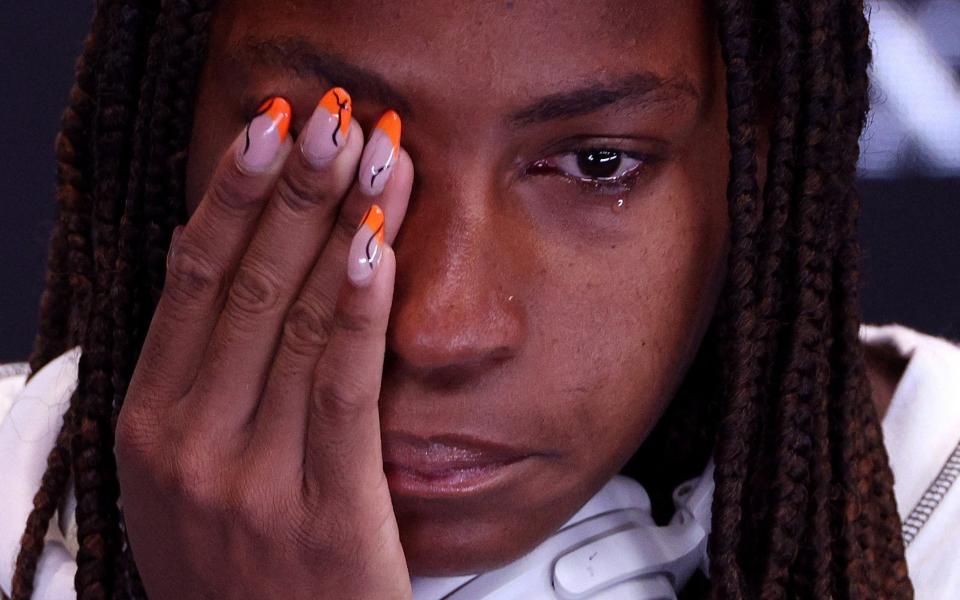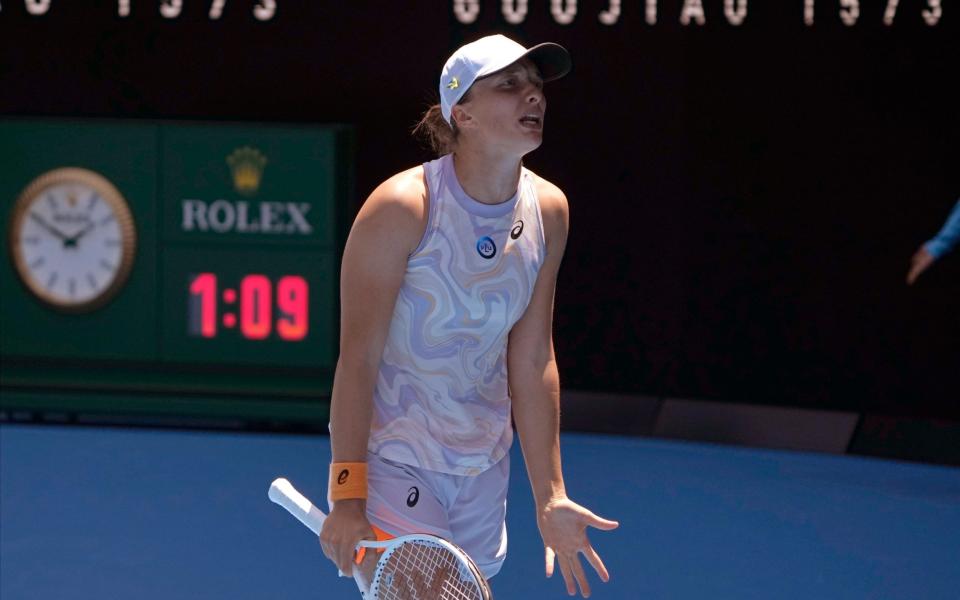
Coco Gauff wept in the interview room on Sunday, as she lamented her straight-sets exit from the Australian Open. And the suits who stage this tournament must have felt like joining in.
Gauff’s fourth-round loss – when combined with the departure of world No1 Iga Swiatek some 30 minutes earlier – has left the broadcasters and marketeers with precious few marquee names to sell.
On the women’s side, this is hardly a new phenomenon. The intense turbulence of the WTA Tour makes it hard to identify meaningful narratives or build rivalries between the leading players. Much of the time, no-one knows who those leading players might be.
Rewinding 12 months, the most recognisable contenders for the 2022 Australian Open included a heavyweight quartet – Swiatek, Ashleigh Barty, Naomi Osaka, Simona Halep – as well as the emerging teenage talents of Gauff and Emma Raducanu.
But this year’s field is diminished by the fact that Barty has retired, Osaka is on maternity leave, and Halep is suspended while she awaits a hearing over a positive dope test. In their collective absence, Sunday’s results – which saw Jelena Ostapenko take out Gauff by a 7-5, 6-3 margin, and Swiatek suffer a 6-4, 6-4 loss to Elena Rybakina – were the last thing that Tennis Australia wanted.
It should be stressed that the winners of these two matches are hardly nobodies. Rybakina is the reigning Wimbledon champion – even though you wouldn’t have known it from the scheduling of her first-round match, which took place out by the tram-tracks on far-flung Court 13.
Rybakina is one of the few women with the firepower to defy Swiatek’s athleticism and large safety margins, Scampering around won’t get the job done. You have to think big, to aim for the lines, to crush every groundstroke. And no-one does that better than Rybakina, whose 121mph serve would look respectable in the men’s event.
In the first game of this match, Rybakina walloped successive returns of serve with such vicious intent that Swiatek – one of the best movers in the sport – couldn’t lay a racket on them. Swiatek did her best to dig in but was overrun as surely as a sandcastle in the face of the incoming tide.
Swiatek: I wanted not to lose more than I wanted to win
While that one played out on Rod Laver Arena, neighbouring Margaret Court Arena was witnessing a similar sort of story. Ostapenko – who won the 2017 French Open – is noticeably less athletic than Gauff, who sprints like a track-and-field star, but she also delivers a massive payload on her ball-strike. The average rally length in this one was just over three shots, as Ostapenko claimed almost half her points with clean winners.
Time after time, both Gauff and Swiatek tried to build rallies in a conventional manner, only to see the ball go whistling past at 100mph. Both women were bundled out without ever finding their feet. Their matches were done in a snappy 1hr 33min and 1hr 29min respectively.
Gauff’s tears came as she described her feeling of powerlessness on the court. “I worked really hard, and I felt really good coming into the tournament,” said Gauff, who had won her warm-up event in Auckland without dropping a set. “I still feel like I’ve improved a lot. But when you play a player like her and she plays really well, it’s like there’s nothing you can do.”
Swiatek, meanwhile, said that she needed to address her mental game after struggling to deal with the expectation around her. “The last couple of weeks have been hard. I felt the pressure. I wanted not to lose more than I wanted to win. I need to work on that.”


Swiatek’s exit created a remarkable statistic. Since the Open era began in 1968, this is the first time that the top two seeds in both the men’s and women’s draws had fallen before the quarter-finals. The other early departures were from Ons Jabeur, Rafael Nadal and Casper Ruud.
On the face of things, this statistic might suggest that the men’s event has been every bit as chaotic as the women’s. But this is only half true.
Yes, there are some unexpected players in the last eight – such as 21-year-old Czech Jiri Lehecka, who ousted sixth seed Felix Auger Aliassime on Sunday. But nine-time champion Novak Djokovic – strapped-up hamstring and all – was still alive in the draw at the time of writing.
What’s more, the men’s seedings are deceptive. Djokovic came in as the runaway favourite, despite his fitness worries. He would surely have been one of the two highest seeds if it hadn’t been for the various anomalies of the last 12 months – namely the Russia row which saw his Wimbledon triumph go unrewarded in the rankings table, and his Covid-related absence from last year’s two hard-court slams.
